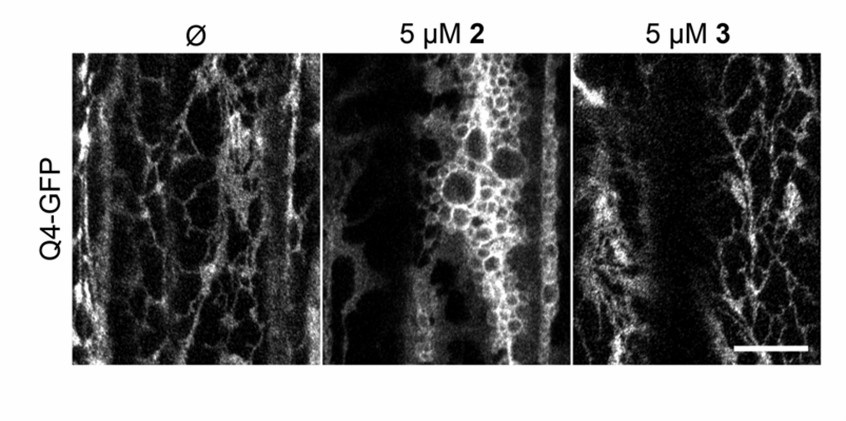Functional Analysis of Plant Endoplasmic Reticulum
The endoplasmic reticulum (ER) is a dynamic subcellular compartment essential for eukaryotic life because it significantly contributes to the synthesis of basic cellular components, including proteins and lipids, and it serves as an essential structural scaffold to maintain a well-organized spatial distribution of other inner membrane organelles. In addition to proteins such as receptors, ion channels, and enzymes, the ER synthesizes a wide variety of cargo molecules, which control a wide range of physiological and fundamental processes, and are ultimately transported from the ER or retained in this organelle.
Lifeasible, as a leading global company, is committed to helping our customers achieve effective and successful research. We provide functional analysis of plant endoplasmic reticulum, including interference probe, related proteins, and stress-related genes. In addition, we deliver reliable results and reports on time to our customers worldwide.
- In multicellular organisms, because the genes of the plant endomembrane system are complex and variable, traditional genetic methods cannot completely determine endomembrane function through anatomy. In recent years, complementary small molecule detection methods have provided a new way to monitor complex physiological functions in plants.
- Lifeasible designs a novel molecule that perturbs ER structure and further synthesizes clickable photoaffinity labeled probes. The probe selectively labels the oleaginous proteins and is associated with ER structures in plants.
 Fig.1 Endoplasmic reticulum structure of Arabidopsis hypocotyl epidermal cells labeled with GFP-Q4. (Dejonghe W., et al., 2021)
Fig.1 Endoplasmic reticulum structure of Arabidopsis hypocotyl epidermal cells labeled with GFP-Q4. (Dejonghe W., et al., 2021)
- Secreted proteins are produced by ER-bound ribosomes as peptide precursors and must fold correctly in the ER cavity before export. Most of the proteins involved in the cell membrane system are conserved in eukaryotes, and the two Arabidopsis proteins associated with ER, KMS1, and KMS2, are conserved in most species.
- In addition, plant ER-type I membrane proteins, such as omega-3 desaturase in Arabidopsis or calnexin in different plant species, also play a role in the function of the ER.
- We provide functional analysis of these plant ER proteins, including their involvement in regulating ER morphology, influencing secretory proteins, and membrane protein retention signals.
- Disruption of ER function leads to the accumulation of unfolded or misfolded proteins in the ER, causing ER stress (ERS). ERS signals are captured by receptors on the ER membrane to regulate the expression of molecular chaperones and other related proteins, initiating the ER quality control system, thus reconstructing ER homeostasis.
- We provide functional analysis of ER stress-related genes, including those involved in abiotic stress, plant disease resistance, autophagy, and phytohormones.
Lifeasible is always devoted to providing high-quality and satisfactory service to our customers. If you are interested in our services or have any questions, please feel free to contact us or make an online inquiry.
Reference
- Dejonghe W., et al. (2021). "In Planta Labeling Using a Clickable ER-Disrupting Probe Suggests a Role for Oleosins in Arabidopsis Seedling ER Integrity." ACS Chem Biol. 16 (11), 2151-2157.
For research or industrial raw materials, not for personal medical use!
 Fig.1 Endoplasmic reticulum structure of Arabidopsis hypocotyl epidermal cells labeled with GFP-Q4. (Dejonghe W., et al., 2021)
Fig.1 Endoplasmic reticulum structure of Arabidopsis hypocotyl epidermal cells labeled with GFP-Q4. (Dejonghe W., et al., 2021)